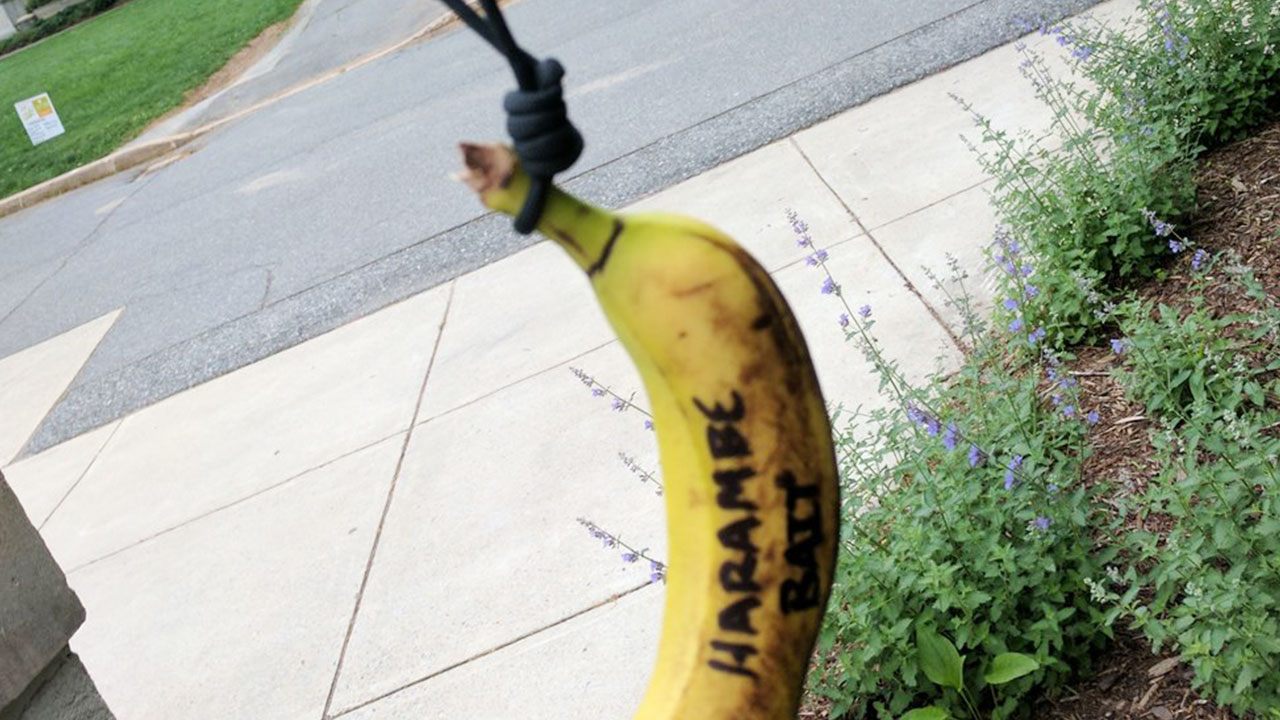As the Trump administration settles into its fifth month in the White House, hate-fueled acts of intimidation and harassment have increased in the public domain.
Since the day after the 2016 presidential election through March 31, the Southern Poverty Law Center has documented 1,863 bias incidents. Of these, 292, or 15.67%, were anti-black motivated incidents. One of the most pervasive manifestations of these happenings is the display of nooses.
Several examples have surfaced on academic campuses in the past month. In early May, bananas with odious messages were found hanging from nooses on American University’s campus in Washington, D.C. Just over a week later, two Maryland men were arrested for hanging a noose outside Crofton Middle School . Similarly, four students were recently identified as being involved with hanging a black teddy bear from a noose at Wakefield High School in North Carolina.
More recent incidents came from the heavily trafficked Smithsonian Museums in Washington, D.C. The first was found hanging from a tree at the Hirshhorn Museum on May 26. The second was discovered several days later on the second floor of the National Museum of African American History and Culture in an exhibit about segregation. The latest incident occurred this past weekend when a noose was found at a construction site in the predominately African American Hillcrest neighborhood in Southeast Washington, D.C.
Similar attacks, targeting members of various segments of society, have largely gained a platform due to the new administration’s governing motives and tactics. Throughout the campaign season, Trump incited hatred and violence amongst his followers, urging them to confront diversity with hostility. He has continued to endorse such tactics throughout the beginning stages of his presidency with various political appointees, travel bans, unfeasible “infrastructure” and attacks on basic healthcare rights.
Those who have felt empowered by such an administration have raised the issue of the First Amendment right to freedom of speech in defense of noose imagery. Despite these seemingly unfettered protections, the First Amendment does not extend to protect expressions that incite violence, intend to intimidate, or threaten another individual. Furthermore, defenders may say nooses have other associations outside of a historical time period rooted in racist vigilante justice and kangaroo courts. However, due to the 4,700 extra legal hangings (three quarters of which killed African Americans) carried out in the late 19th and early 20th centuries, the imagery is undeniable. Nooses evoke feelings of subjugation, discrimination and fear targeting mainly Black members of society. The history and imagery are too intimately bound to consider these actions a simple expression of one’s viewpoint.
In each of the aforementioned instances the messages of hatred and intimidation were unmistakable. The morning banana-laden nooses were found at American University, the first black woman took office as president of the student body. The messages scrawled on the bananas were a direct attack on her identity and integrity. Several miles east at Crofton Middle School, a noose was used to intimidate children attending school in a predominately white suburb of Washington, D.C. Furthermore, at the high school in North Carolina, the hanged black teddy bear was aimed at intimidating the newly instated black principal, while also calling for the return of his white predecessor.
While both incidents at the Smithsonian Museums were egregious in the hate they expounded, a noose placed in the National Museum of African American History and Culture is particularly repugnant. Leaving a noose in an exhibit dedicated to documenting the challenges of segregation in a museum that was meticulously established to anthologize the African American experience, both past and present, is the height of bigotry. All of these incidents are hate crimes to their core. They incite prejudice and harken back to a time when nooses were used as apparatuses of execution. The resurgence of their usage within the public realm as a means for intimidation and subjugation is legally and morally reprehensible.



